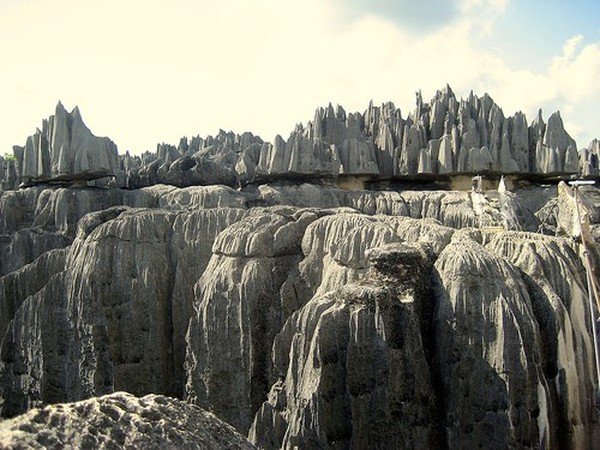|
|
Stone Forest In Madagascar, Manambulu - Bemaraha
|
Madagascar's varied fauna and flora are endangered by human activity. Since the arrival of humans 2,000 years ago, Madagascar has lost more than 90% of its original forest, 70% was destroyed between 1895 and 1925, when Madagascar was under French rule. One third has disappeared since the 1970s. Key contributors to the loss of forest cover include the use of coffee as a cash crop, illegal logging and slash-and-burn activity, locally called tavy. This traditional practice was imported to Madagascar by the earliest settlers from Indonesia around 2,000 years ago and has strong cultural meaning in addition to its practical value as an agricultural technique.
Habitat destruction and hunting have threatened many of Madagascar's endemic species or driven them to extinction. This process is exemplified by the extinction of elephant birds (Aepyornis), an endemic giant ratite that was formerly the world's largest bird. This species, whose average height was over 3 metres (10 ft) tall, has been extinct since at least the 17th century, most likely due to human hunting of adult birds and poaching of their massive eggs for food. Numerous subfossil lemur species also vanished with the arrival of human settlers to the island, and today most extant lemurs are listed as endangered or threatened species due to habitat destruction. Many species have gone extinct over the course of the last centuries as a growing population has put greater pressures on lemur habitats and, among some populations, increased the rate of lemur hunting for food.
Under President Marc Ravalomanana, a vigorous effort was made to expand Madagascar's protected natural areas. At the 2003 IUCN World Parks Congress in Durban, Ravalomanana announced the Durban Vision, a bold initiative to more than triple the area under protection from approximately 17,000 km² to over 60,000 km² (from 3% to 10% of Madagascar's area). As of 2011, areas protected by the state include five Strict Nature Reserves (Réserves Naturelles Intégrales), 21 Wildlife Reserves (Réserves Spéciales) and 21 National Parks (Parcs Nationaux). In 2007 six of the national parks were voted in as a joint World Heritage Site under the name Rainforests of the Atsinanana. These six are: Marojejy, Masoala, Ranomafana, Zahamena, Andohahela and Andringitra National Park. Local timber barons are harvesting scarce species of rosewood trees from protected rainforests such as Marojejy National Park and exporting the wood to China for the production of luxury furniture and musical instruments. To raise public awareness of Madagascar's environmental challenges, the Wildlife Conservation Society opened an exhibit entitled "Madagascar!" in June 2008 at the Bronx Zoo in New York.
|
|









